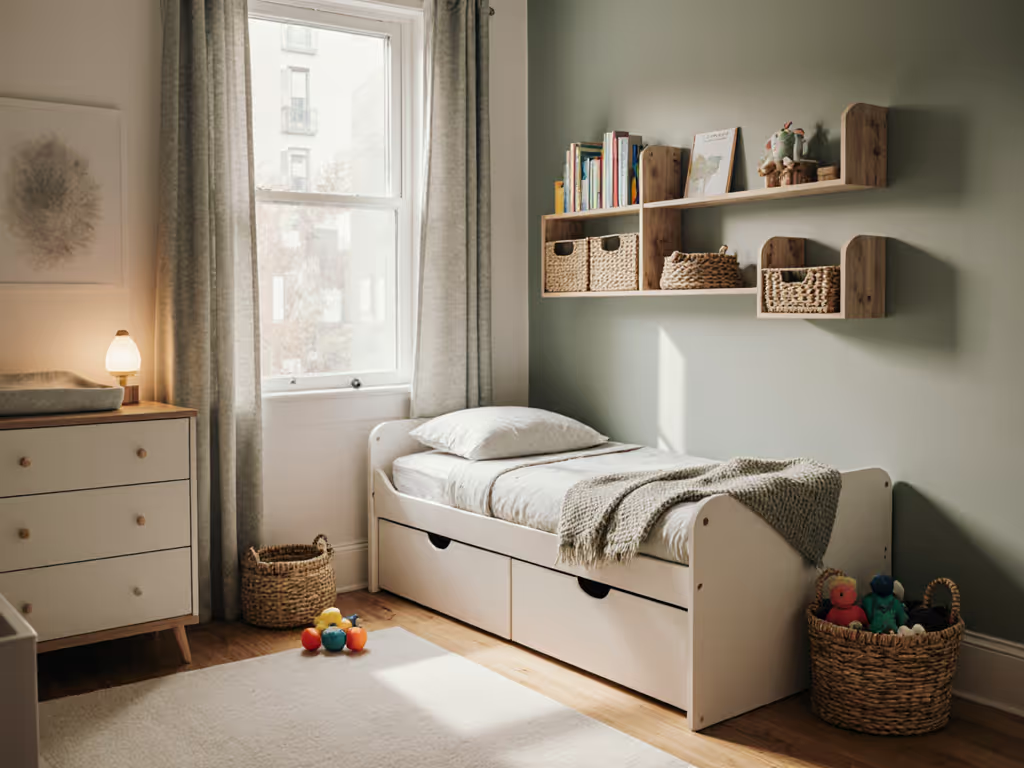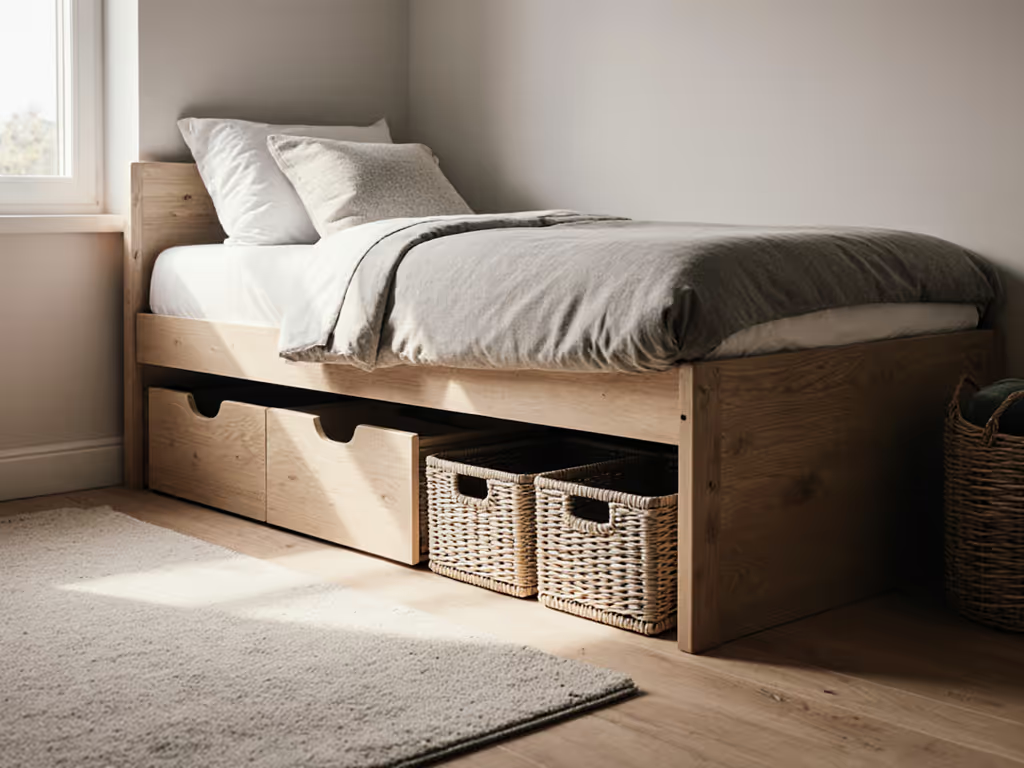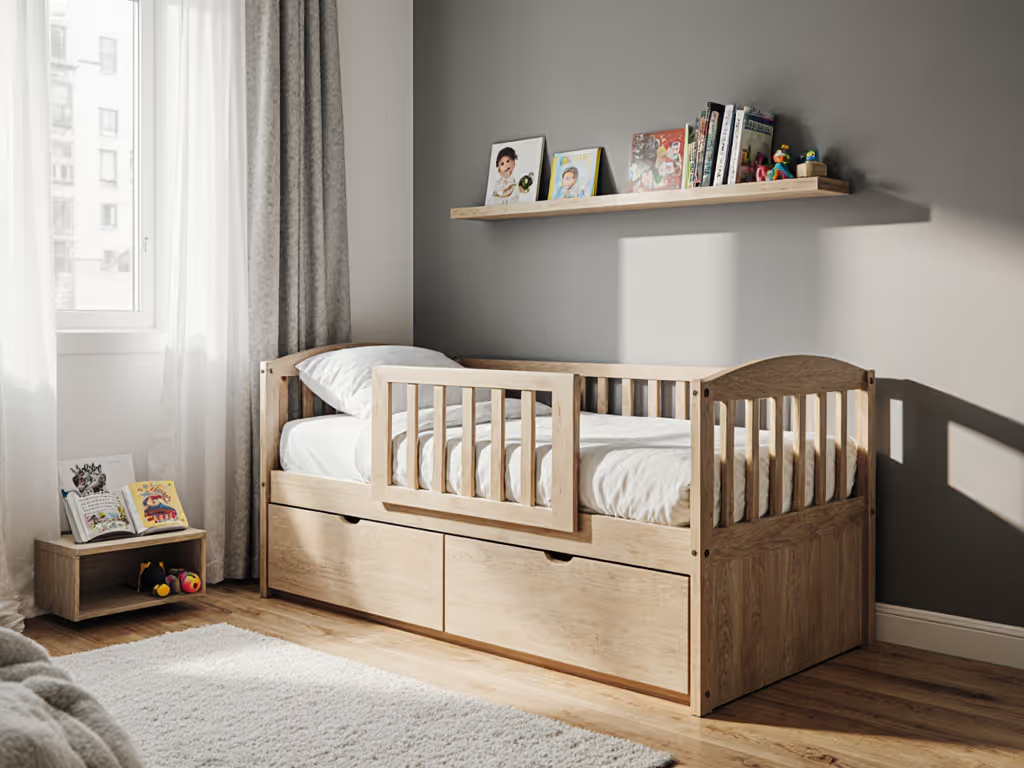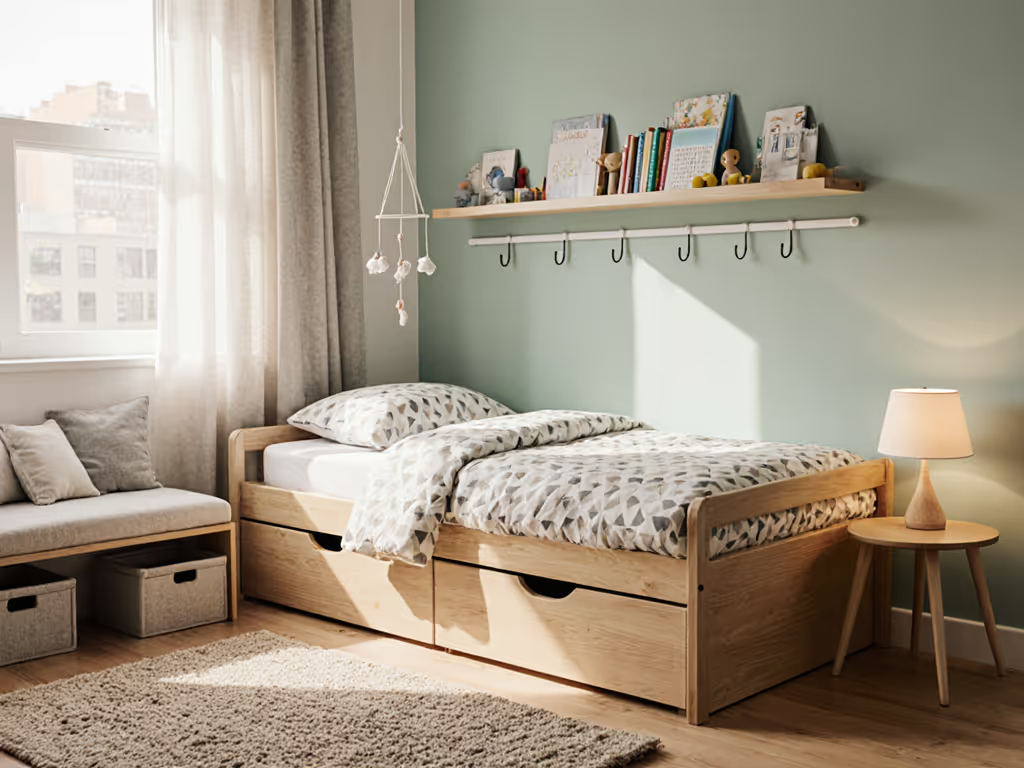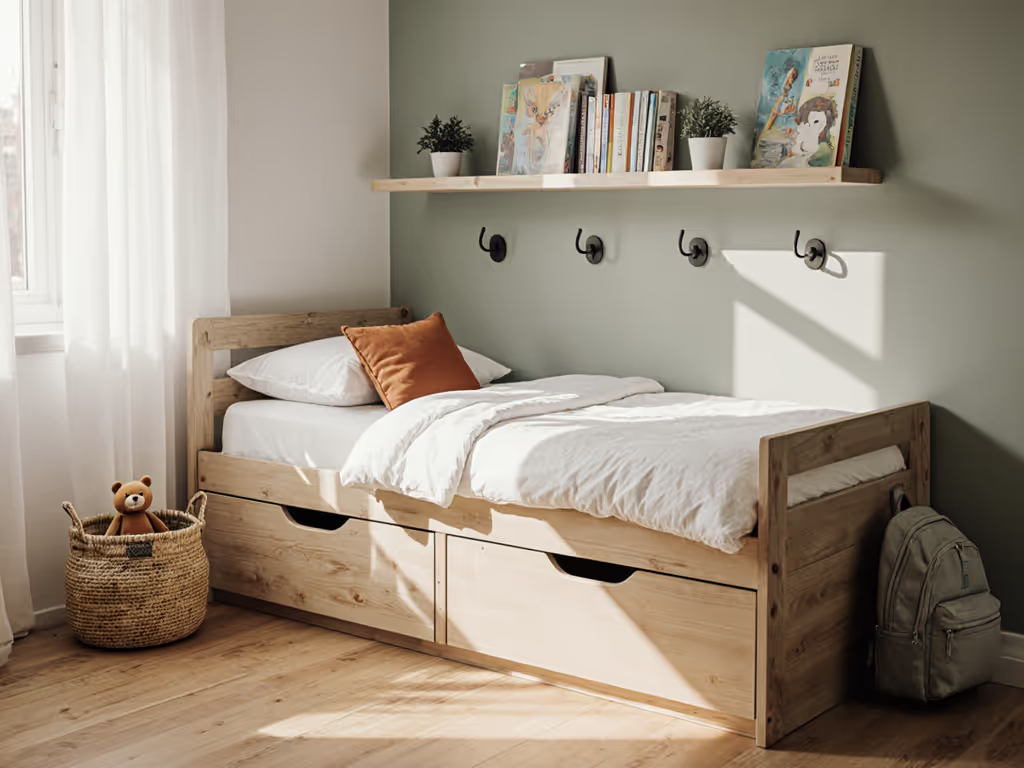
Toddler Bed Frame Types Explained: Complete Guide
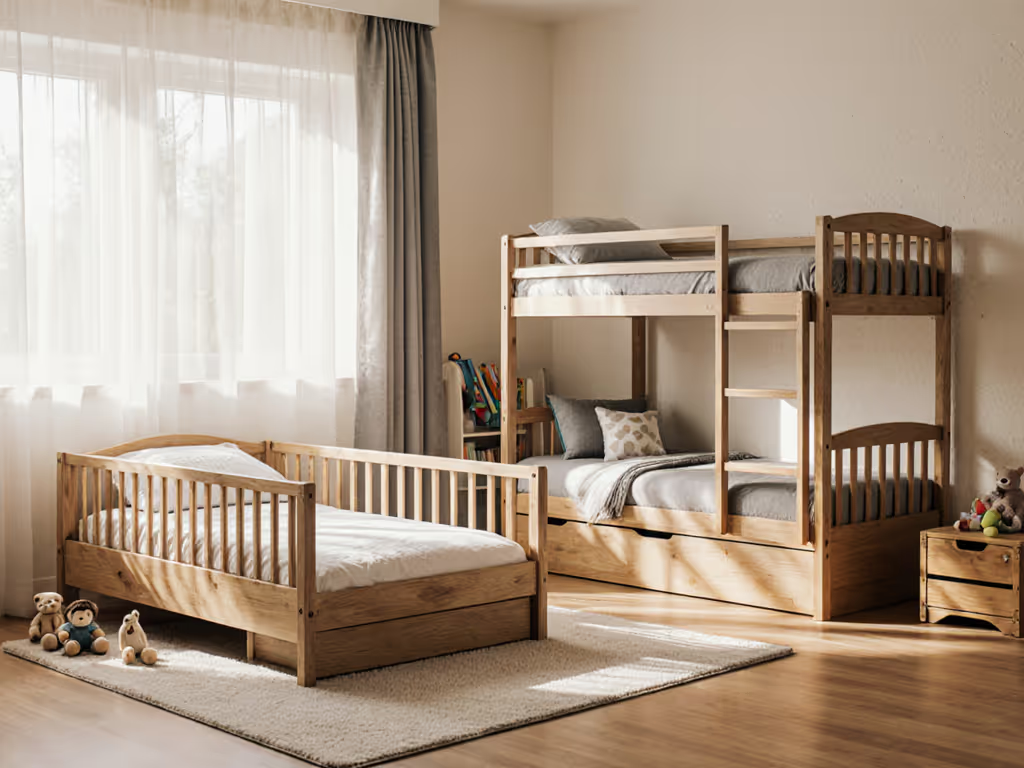
Nearly 60 percent of parents are unsure when and how to move their child from a crib to a regular bed. This uncertainty can lead to safety risks or missed chances for building independence. Understanding what truly sets toddler bed frames apart helps parents sidestep common myths and make confident choices. The right transition offers both comfort and security while supporting your little one's growing need for autonomy.
Key Takeaways
| Point | Details |
|---|---|
| Toddler Bed Importance | Toddler bed frames are specially designed for children transitioning from cribs, focusing on safety and encouraging independence. |
| Material Types | Parents should consider the advantages of different materials (wood, metal, plastic) to find the best fit for safety, maintenance, and aesthetics. |
| Innovative Designs | Space-saving and convertible bed frames offer practicality by adapting to changing needs and maximizing limited living space. |
| Safety Standards | Ensure the selected frame adheres to safety certifications and incorporates design features that minimize injury risks to children. |
Toddler Bed Frames Defined and Common Myths
A toddler bed frame is far more than a miniature sleeping surface - it's a carefully engineered transitional space designed specifically for children between 18 months and 4 years. Unlike standard cribs or adult beds, these specialized frames prioritize safety, mobility, and developmental needs. Imagine a sleeping environment that grows with your child, offering protection while encouraging independence.
Toddler bed frames distinguish themselves through several unique characteristics:
- Low profile height for easy child access
- Integrated side rails preventing accidental rolling
- Narrower width compared to standard twin beds
- Robust construction supporting active young sleepers
- Typically compatible with standard crib mattresses
Many parents harbor misconceptions about these specialized beds. One prevalent myth suggests that any small bed can serve as a toddler bed. However, purpose-built toddler beds undergo rigorous safety testing and adhere to specific design standards that generic small beds simply cannot match. The differences extend beyond size - they're about creating a secure, age-appropriate sleeping environment.
The transition from crib to toddler bed represents a significant developmental milestone. While some parents might feel tempted to skip this stage, purpose-designed toddler beds offer crucial benefits. They provide a sense of security through familiar dimensions while introducing newfound mobility. The low-height design allows toddlers to independently enter and exit their sleeping space, fostering early self-sufficiency and confidence. Professional child development experts consistently recommend these specialized frames as an essential bridge between infant cribs and standard children's beds.
Major Toddler Bed Frame Types Explained
When selecting a toddler bed frame, parents encounter four primary material types, each bringing unique advantages to a child's sleeping environment. Understanding these options helps you make an informed decision that balances safety, durability, aesthetics, and your specific living space requirements.
Wooden Toddler Bed Frames
Classic and dependable, wooden bed frames represent the gold standard in toddler sleeping solutions. Crafted from solid hardwoods like maple, oak, or pine, these frames offer exceptional durability and a timeless aesthetic. Their natural rigidity provides robust support, while smooth finishes prevent potential splinters or rough edges. Wooden frames typically feature:
- Sturdy construction
- Long-lasting performance
- Traditional, warm appearance
- Multiple finish options
- Natural material appeal
Metal Toddler Bed Frames
Metal bed frames bring a modern, lightweight alternative to traditional wooden designs. Constructed from aluminum or steel, these frames offer incredible strength without significant weight. Their sleek profiles work perfectly in minimalist or contemporary bedroom spaces. Key characteristics include:
- Lightweight design
- Rust-resistant materials
- Smooth, clean aesthetic
- Easy maintenance
- Potential for intricate design patterns
Plastic Toddler Bed Frames
Colorful and practical, plastic bed frames cater specifically to parents seeking low-maintenance, vibrant sleeping solutions. Manufactured from high-grade, child-safe plastics, these frames prioritize easy cleaning and playful design. Their lightweight nature allows simple room rearrangements and transportation. Distinctive features include:
Here's a comparison of the main toddler bed frame material types and their key features:

| Material Type | Durability | Safety Features | Maintenance | Visual Appeal |
|---|---|---|---|---|
| Wood | High | Sturdy<br>Rounded edges | Moderate<br>Occasional polishing | Classic<br>Warm finishes |
| Metal | High | Smooth surface<br>Strong rails | Low<br>Easy to wipe | Sleek<br>Modern looks |
| Plastic | Moderate | Lightweight<br>Curved corners | Very Low<br>Simple cleaning | Bright colors<br>Playful designs |
- Bright color options
- Effortless cleaning
- Lightweight construction
- Rounded, safety-focused edges
- Budget-friendly pricing
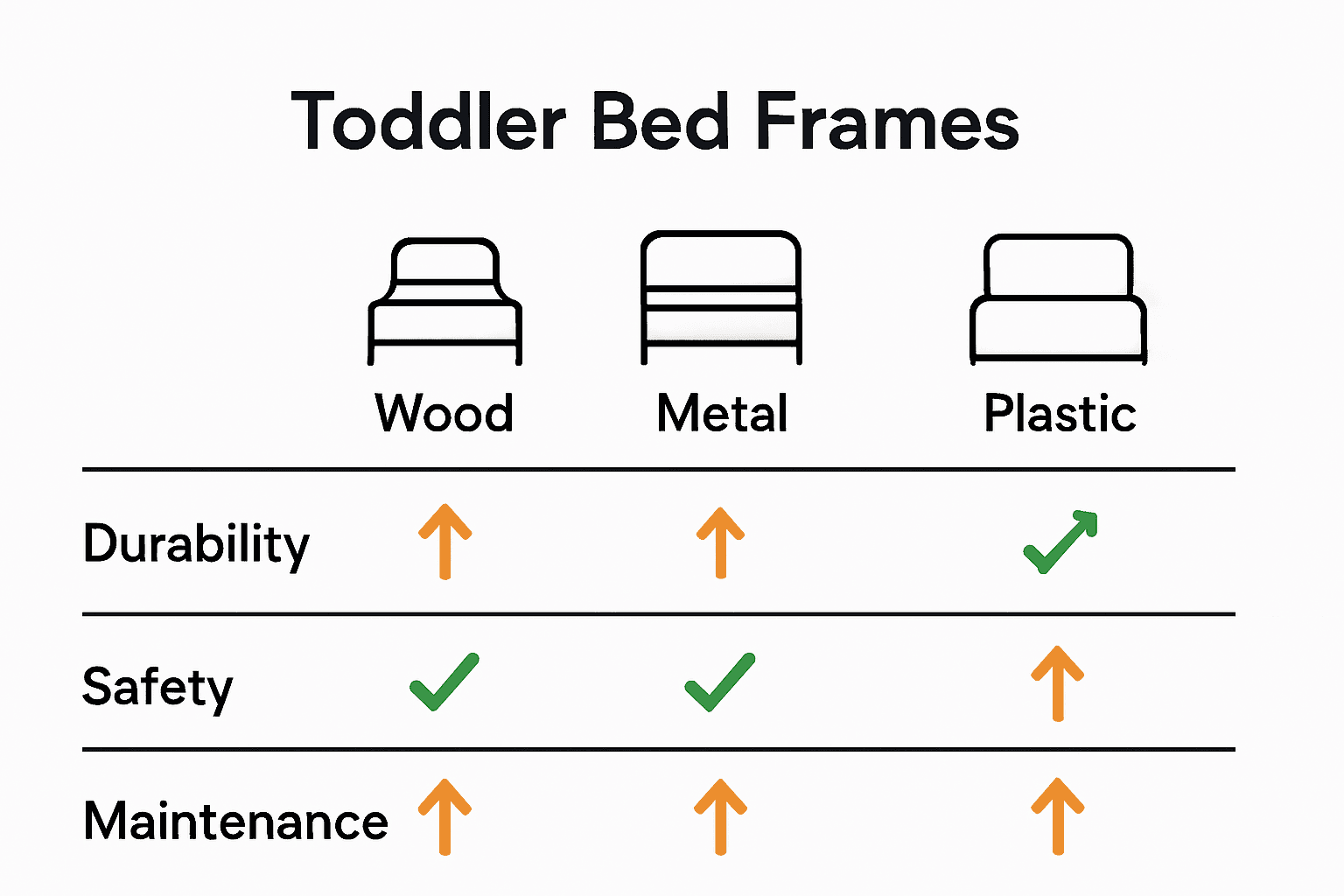
While each frame type offers distinct advantages, your ultimate selection should balance practical considerations like room size, budget, and your child's individual needs. Carefully evaluate material properties, safety features, and long-term durability to create the perfect sleeping environment for your growing toddler.
Space-Saving and Convertible Frame Designs
Modern toddler bed frames have revolutionized children's bedroom design by introducing innovative space-saving and adaptable solutions that grow alongside your child. These intelligent designs address the challenging reality of limited living spaces while providing long-term value and functionality that extends well beyond the toddler years.
Convertible Bed Frame Designs
Convertible bed frames represent the pinnacle of smart furniture engineering. These versatile sleeping solutions typically transform through multiple stages - starting as a crib, transitioning to a toddler bed, and ultimately converting into a full-size twin or junior bed. The primary advantages include:
- Eliminates repeated furniture purchases
- Provides consistent sleeping environment
- Cost-effective long-term investment
- Maintains familiar design for child comfort
- Reduces overall bedroom furniture footprint
Montessori-Inspired Floor Bed Concepts
Floor bed designs have gained significant traction among parents seeking minimalist, child-centered sleeping arrangements. These low-profile frames sit directly on the floor, eliminating fall risks while promoting independence and natural exploration. Key characteristics include:
- Ultra-low height for safe child access
- Encourages self-directed movement
- Minimalist design aesthetic
- Easily integrated into small bedroom spaces
- Supports child's developing autonomy
Multi-Functional Frame Strategies
Innovative manufacturers now offer bed frames with integrated storage, pull-out trundle options, and modular configurations. These designs transform a simple sleeping surface into a multifunctional space management solution.
 Parents can maximize limited square footage while creating a dynamic, adaptable environment that supports a child's growth and changing needs.
Parents can maximize limited square footage while creating a dynamic, adaptable environment that supports a child's growth and changing needs.
When selecting a space-saving toddler bed frame, consider your specific living situation, budget constraints, and long-term furniture requirements. The right design will not just accommodate your toddler's sleeping needs but will seamlessly adapt to their evolving developmental stages.
Safety Standards and Material Considerations
Toddler bed safety represents a complex intersection of material science, child development research, and rigorous manufacturing standards. Parents must navigate multiple considerations to create a sleeping environment that protects their child's physical well-being while supporting healthy developmental transitions.
Material Safety Fundamentals
Choosing the right materials is crucial in toddler bed construction. Solid hardwoods like maple, oak, and pine emerge as top choices due to their inherent stability and minimal chemical off-gassing. Engineered materials require careful scrutiny to ensure they meet stringent safety protocols. Critical material considerations include:
- Non-toxic wood treatments
- VOC-free paint and finish options
- Smooth, splinter-resistant surfaces
- Hypoallergenic material selections
- Chemical-free manufacturing processes
Structural Safety Design Elements
Toddler bed frames must incorporate specific design features that mitigate potential injury risks. Professional safety standards mandate precise measurements, robust construction, and thoughtful engineering. Essential structural safety elements encompass:
- Rounded corner designs
- Secure rail attachments
- Minimal gap between mattress and frame
- Weight-bearing capacity exceeding child's weight
- Smooth, seamless joints without protruding hardware
Certification and Compliance Standards
Reputable manufacturers adhere to national safety certifications that guarantee minimum performance standards. Parents should seek bed frames with documented compliance from recognized testing organizations. Important verification points include:
- ASTM International safety certifications
- Consumer Product Safety Commission (CPSC) approvals
- Third-party laboratory testing results
- Annual manufacturing safety audits
- Transparent material sourcing documentation
Ultimately, selecting a toddler bed frame demands careful research and a holistic understanding of safety requirements. By prioritizing certified materials, thoughtful design, and rigorous manufacturing standards, parents can create a secure sleeping environment that supports their child's growth and developmental journey.
Choosing the Best Frame for Your Space
Selecting the perfect toddler bed frame requires a delicate balance between practical considerations, aesthetic preferences, and your unique living environment. Parents must navigate multiple factors to ensure the bed not only fits physically but also complements their lifestyle and supports their child's developmental needs.
Room Size and Layout Considerations
The dimensions of your child's bedroom will significantly influence your bed frame selection. Compact urban apartments demand different strategies compared to spacious suburban homes. Critical spatial assessment factors include:
- Total available floor space
- Proximity to windows and doors
- Potential for future room reconfiguration
- Need for additional storage
- Existing furniture dimensions
Weight and Mobility Dynamics
Frame weight plays a crucial role in long-term functionality, especially for families who frequently rearrange living spaces. Lighter materials like aluminum or high-grade plastics offer easier maneuverability, while solid hardwood frames provide superior durability but require more effort to reposition. Consider these mobility factors:
- Total bed frame weight
- Ease of lifting and moving
- Wheel or glider attachment options
- Potential for room reorganization
- Long-term stability requirements
Material Selection Strategy
Your choice of bed frame material directly impacts durability, maintenance, and overall room aesthetic. Hardwoods like oak and maple offer timeless elegance and robust construction, while modern synthetic materials provide lightweight, easy-to-clean alternatives. Key material evaluation points include:
- Maintenance requirements
- Durability under active child use
- Cleaning and hygiene potential
- Aesthetic compatibility
- Budget constraints
Ultimately, the ideal toddler bed frame transcends mere measurements. It represents an investment in your child's comfort, safety, and developing sense of personal space. Take time to assess your specific needs, visualize potential configurations, and choose a frame that grows alongside your family's evolving lifestyle.
Find the Perfect Toddler Bed Frame for Your Child's Safe and Happy Transition
Choosing the right toddler bed frame is more than picking a piece of furniture. It means creating a secure space that supports your child's independence, safety, and growth as they move from crib to bed. This article highlights common challenges like balancing durability, space-saving designs, and child-friendly features such as low profiles and rounded corners. If you want expert advice on navigating those choices, including detailed explanations of wooden, metal, and plastic frames, you do not have to go it alone.
Explore the wealth of knowledge at City Toddler Beds where safety standards meet real-life parenting needs. From understanding eco-friendly materials to discovering convertible and Montessori-inspired bed options, our comprehensive guides empower you to make confident decisions now. Don't let uncertainty delay this critical milestone. Visit City Toddler Beds today and take the first step toward creating a secure, space-smart bedroom your toddler will love. Make your child's comfort and safety your priority right away.
Frequently Asked Questions
What are the main benefits of using a toddler bed frame?
Toddler bed frames provide a safe and comfortable sleeping environment for children transitioning from cribs. They feature low profiles for easy access, integrated side rails for safety, and are designed to encourage independence.
How do wooden, metal, and plastic toddler bed frames differ in terms of durability and appearance?
Wooden frames are robust and offer a classic aesthetic, while metal frames are lightweight and modern. Plastic frames are vibrant, easy to clean, and budget-friendly but may not be as durable as wood or metal.
What design features should I look for in a safe toddler bed frame?
Look for rounded corners, secure rail attachments, and minimal gaps between the mattress and frame. Ensure the bed's weight capacity exceeds your child's weight and that it adheres to recognized safety certifications.
How do convertible toddler bed frames work, and what advantages do they offer?
Convertible toddler bed frames can transition from a crib to a toddler bed and then to a twin bed. They eliminate the need for multiple purchases, provide a consistent sleeping environment, and are cost-effective long-term investments.

